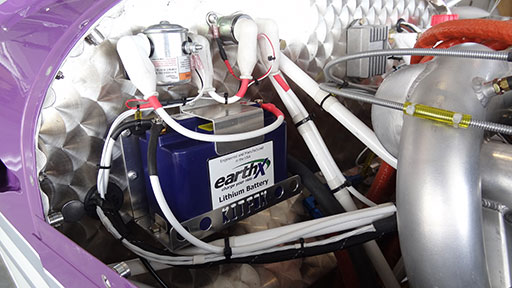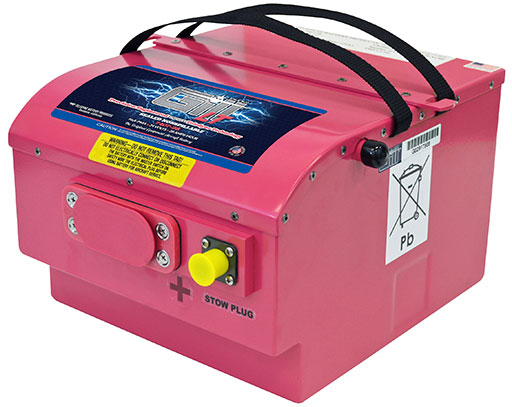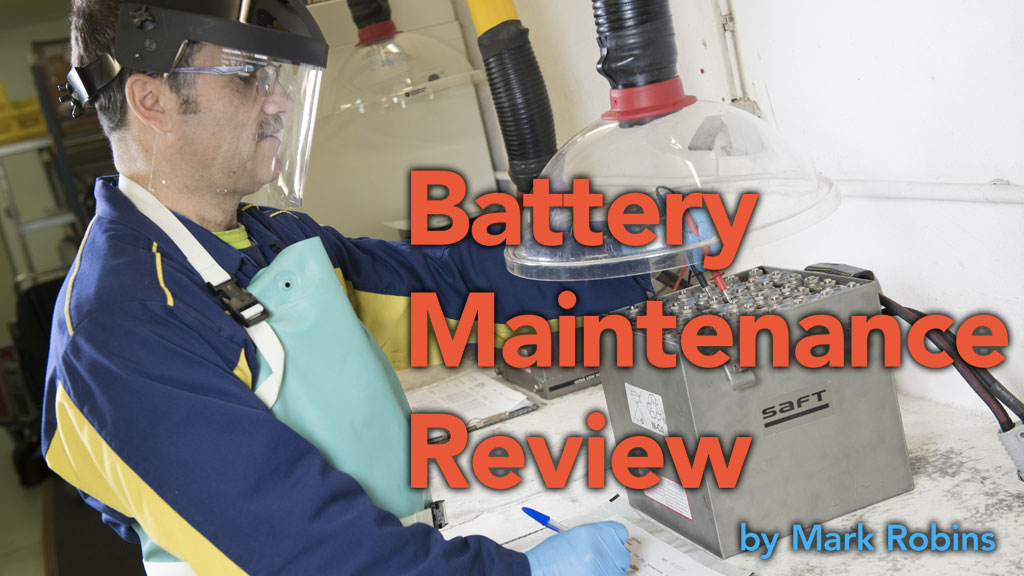Taking care of aviation batteries is a necessary, but vital, requirement for aircraft operators.
Aircraft batteries, like car batteries, are an essential yet oft overlooked piece of equipment in an aircraft. They are needed to start the engine or APU, to provide electrical power and as a back up if
a malfunction occurs.
Like any other piece of equipment, aviation batteries require scheduled checks and maintenance in order to ensure their safe and reliable operation, especially in emergency conditions on board an aircraft.
“Maintenance checks permit any problems to be identified and rectified,” said Jean-Marc Thevenoud, market manager at Saft Aviation in France. “The maintenance interval is the period for which correct operation is ensured with a low probability of failure and that allows high levels of Mean Time Between Unscheduled Removals (MTBUR) and Mean Time Between Failures (MTBF) to be achieved.
Factors that influence battery maintenance interval times include the charging system, type of starting, battery operating temperature, flight duration, number of starts, ground operation and battery technology.
Overall Maintenance
Aviation battery maintenance depends on the type of aircraft and its usage. All maintenance, including charging and discharging, should be done specifically in accordance with the instructions contained in the component maintenance manual (CMM), or if a CMM doesn’t exist, the operating and maintenance manual (OMM).
Janak M. Rajpara, director of engineering/QA at Teledyne Battery Products, Redlands, Calif., said basic aviation battery maintenance should involve:
- Ensuring minimum battery to cable connection resistance
- Checking for physical wear at connectors, cables, and battery pins
- Visually checking for chemical corrosion
“One needs to wirebrush the ring and battery terminals,” he added. “They can corrode or oxidize over time. They need to be kept clean. The battery-to-cable connection can get hot if loose
or dirty.”
Again, charging processes and load testing are described in the battery’s CMMs. “The charging methods are described by the type of charge: constant voltage (or potential), constant current and float,” said Rajpara. “Each method provides specific treatment to the battery. It is essential that recommended chargers be used for the needed maintenance. The use of inadequate charging will damage the battery or shorten its service life.”


Teledyne Battery Products
Teledyne Battery Products (Gill Batteries) recommends load testing to ensure airworthiness of the batteries in use. “Basic load testing is accomplished by the use of the fixed discharge rate as determined by battery type,” Rajpara explained. “After the battery has been load tested, it must be recharged per the CMM before returning to service. On occasion, one may need to conduct an additional load test, particularly if the battery has been heavily discharged.”
Battery Types
A lead acid battery cell contains an anode made from lead oxide and a cathode of elemental lead immersed in an electrolyte solution of sulfuric acid. A valve-regulated lead-acid (VRLA) battery does not require constant maintenance but is not ‘maintenance free.’
“[There is] no way to complement the water losses that occur during operation, but a VRLA battery requires periodic control if its life has to be extended beyond the period following the first installation on board an aircraft—one to two years depending on the manufacturer,” said Laurent Bressoud, product support, Saft Aviation, Levallois-Perret, France. “This control is performed off-wing with a periodicity of about six months which is similar to what is required for Ni-Cd batteries.”
Nickel-cadmium (Ni-Cd) cells have an anode made of cadmium hydroxide and a cathode of nickel hydroxide that are immersed in an electrolyte made up of potassium, sodium and lithium hydroxides. According to Bressourd, Ni-Cd batteries experience, “Capacity decay with time with no sudden change in the decay slope,” he said. “Even if a non- predictable single cell failure occurs, cell internal short-circuit for instance, the cell fails in short circuit mode and the battery can continue to operate with a slightly lower voltage until it can be put off-wing for repair.”
Rajpara recommended that the following factors must be understood with Ni-Cd batteries:
- Top charge
- Proper electrolyte levels
- Cell balancing
- Need for deep cycle
- Overhaul
- Monitoring temperature sensors
Lithium Ion (Li-ion) batteries are relatively maintenance free during storage according to one supplier. “A lithium battery has a self-discharge rate of less than 2 percent per month, so the battery could sit on a self for over a year,” said Reg Nicoson, chief technology officer, EarthX Lithium Batteries. “But when it is installed and there is an electrical drain from equipment on-board the airplane, all bets are off. When installed in an aircraft, a battery maintainer should be used during long periods of non-use (greater than one-month periods).”
More Maintenance Tips
A battery’s capacity, that is, its ability to deliver the rated current for a minimum time while the overall battery voltage and that of each individual cell remains above minimum set voltages should be checked annually. “This is especially important for electrically dependent aircraft (with electronic ignition and electric fuel pumps),” Nicoson added. “In general, a battery should be replaced when its capacity is 80 percent of the nameplate rating. For example, if a battery is rated at 15Ah, it should be replaced when the measured Ah degrades to less than 12Ah. A battery that will not hold a charge is a battery that is defective/damaged or at the end of its life. In any case, the battery must be removed from service as soon as possible. This is especially important with a lithium battery.”
Rajpara recommended these additional basic battery maintenance tips: follow specific electrolyte fill levels: too much electrolyte will cause spillage and corrosion problems; periodically check the battery voltage; conduct capacity tests at the appropriate temperature; and use clean / distilled water for periods needing water additions.
Thevenoud stressed that good aviation battery maintenance starts with having well-designed and well-equipped battery shops equipped with well-trained technicians. “Saft has developed dedicated class trainings for Ni-Cd and Li-ion batteries in France, United States or at customer sites,” he said. “Saft has also a network of Saft authorized battery shops all over the world that are audited by Saft on regular basis.”
